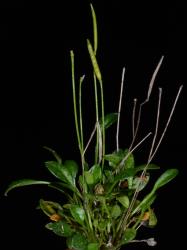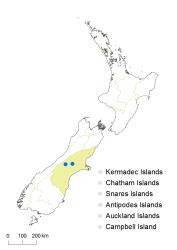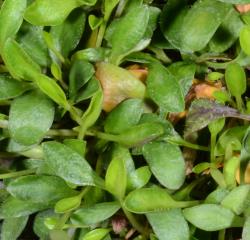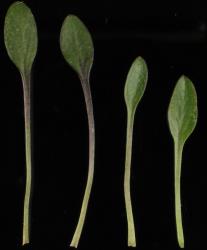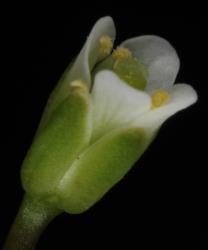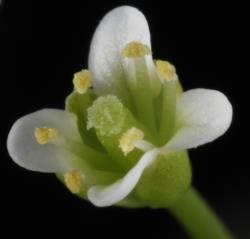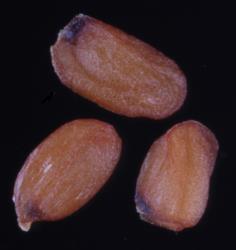Perennial herb, single rosette or multiple rosettes on short lateral branches, stem and branches 1.2–1.7 mm diam. Leaves up to 90 mm long, simple; pinna 9.0–30.0 × 3.0–11.0 mm, green, glabrous or sparsely hairy, matt, membranous, obovate, elliptic to broadly elliptic, margin entire, apex subacute or occasionally obtuse and with a hydathode; base attenuate to cuneate; petiole up to 60 mm long, plano-convex, glabrous. Cauline leaves absent. Inflorescence a corymb, 2–4-flowered, flowers sometimes solitary; peduncle 7–30 mm long, 0.7–0.9 mm diam. at base, ascending, glabrous. Pedicels 50.0–90.0 mm long, 0.4–0.5 mm diam., flexuose, glabrous. Sepals 1.9–2.0 × 0.8–1.4 mm, elliptic-oblong to broadly elliptic, ± saccate, green and sometimes flushed red-brown at apex, glabrous, margin white and membranous, apex obtuse, base truncate. Petals 2.6–4.2 × 0.9–2.0 mm, white, limb obovate to broadly obovate; apex obtuse; base cuneate, tapering to a 0.9–1.0 mm long claw. Stamens 6; median filaments 4, 2.1–2.7 mm long; lateral filaments 2, 1.8–2.2 mm long; anthers 0.25–0.4 mm long, cream to pale yellow, when dehiscent held at a similar height to or slightly below the stigma. Ovary 2.1–2.6 mm long, 0.3–0.4 mm diam., ± terete, green, glabrous; ovules 8–10; style 0.2–0.3 mm long, ± terete; stigma 0.3–0.4 mm diam. Siliques 7.5–8.0 × 0.9–1.1 mm, glabrous, style 1.0–1.2 mm long; valves green at maturity; straw-coloured when dehiscent, replum 0.3–0.4 mm wide. Seeds 1.1–1.2 mm long, 0.8–1.0 mm wide, 0.3–0.4 mm thick, obovate-oblong to oblong, pale yellow-brown to henna; wing absent.
Cardamine alticola is known from two localities (Mt Hutt and Mt Potts) in the eastern Southern Alps. At both sites it occurs on shaded ledges and crevices on high alpine cliffs at an altitude of 1850–2000 m.
Cardamine alticola is assessed as having a conservation status of Threatened, Nationally Critical (A2), with the qualifier Data Poor (de Lange et al. 2018). The qualifier Data Poor is applied since there is considerable suitable alpine habitat for this species between the Rangitata and Rakaia rivers (central Canterbury) in the vicinity of the two known populations, and field survey is likely to locate further populations.
Flowering February; Fruiting March–April.



